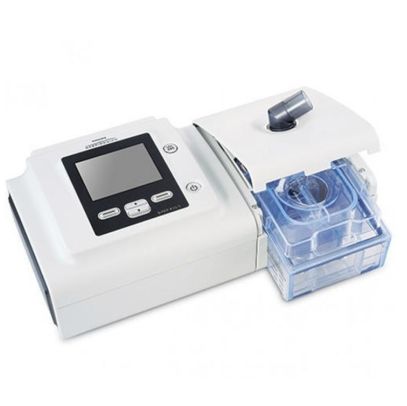Advantages and Limitations of Non-invasive ventilators

Non-invasive ventilation (NIV) refers to the administration of ventilatory support without using an invasive artificial airway (intubation) such as an endotracheal tube or a tracheostomy tube. And the ventilation is administered through a face mask, a nasal mask or a helmet mask connected to a ventilator. Do not confuse with Proair Inhaler.
But are non-invasive ventilators useful? We discuss below. First, let’s start with the advantages of using a non-invasive ventilator.
Possible to Provide at Home
Specialized airway skills are not required to administer NIV. Though you cannot leave mask interfaces and ventilator circuits to completely unskilled people, the medical prowess required to administer NIV is much less compared to intubation. So, it is possible to set up a Non-invasive ventilator even at home.
Inexpensive
The availability of NIV may prevent the need for intubation in some patients. NIV does not require an airway expert, one nurse for each patient or dedicated physiotherapy staff which are required in invasive ventilation. So, NIV is less costly.
Studies have also demonstrated that the location change from a ward to the ICU does not necessarily translate to better results as far as NIV is concerned. So, the ICU cost can also be saved.
Oxygen Concentration and Airway Pressure can be Controlled
A major contribution to the success of NIV in the management of respiratory failure is its ability to deliver a controllable amount of oxygen using a face, nasal or helmet mask that is tightly sealed to the face. The mask seals the airway together with the ventilator circuit. And the ventilator can deliver the prescribed pressure or sound an alarm if it cannot.
Better Tolerated
NIV is more comfortable for the patient as the larynx is not touched. Sedation or muscle relaxant is not required to commence NIV.
In the case of invasive ventilation, once you start the process you have to finish it but NIV can be easily discontinued and recommenced. Also, there is less chance of an infection.
Now, let us look at some of the limitations.
Uncomfortable Interface
NIV masks are tight-fitting and create pressure areas. Inside helmet interfaces, it can be noisy. Apart from the ventilator alarms, patients complain that they have problems sleeping because of the incessant ventilator sounds.
It is also hot and humid in there. Sometimes there could be air leaks that irritate the patient and require a mask change. These issues cannot be ignored because at times patients need NIV but cannot take it because they cannot tolerate it which leads to their intubation.
Setup is Time-Consuming
Setting up an NIV can waste crucial time when the patient is in dire need of invasive ventilation. It is not easy to tell who will benefit from NIV and who needs intubation. But in cases where the condition of the patient is severe, the latter is required and in such scenarios, dilly-dallying with adjusting NIV settings can be fatal.
Nausea and Vomiting
Nausea and vomiting may happen during NIV. Patients may swallow air as a result of which they may cough or do things that will elevate the airway pressure.
Cannot be Used with Physical Restraints
NIV cannot be used in physically restrained patients. They won’t be able to remove their masks if they vomit which may result in asphyxiation.
Unsuited for Comatose Patients
Forcing pressurized gas into the unprotected upper air passages of a comatose patient can cause gastric insufflation and aspiration. For this reason, NIV is not used on patients who are unconscious or unable to generate respiratory effort independently.
Wrapping Up
Patient selection is crucial to ensure success with NIV. Patients who are uncooperative, have upper airway pathology, whose blood circulation is unstable or have excessive secretions or need immediate intubation should not be administered NIV.
Recent developments have, however, resulted in an increase in the use of Non-invasive ventilators. While NIV isn’t an option for every patient with COVID-19 depending on the severity of their symptoms, it has the potential to help many patients suffering from respiratory distress, while ensuring that invasive ventilation options are available for the critically ill.
What’s your view about non-invasive ventilators? Have we missed anything to add? Do you’ve any questions? Please feel free to leave your comments below, we’d love hearing from you.




